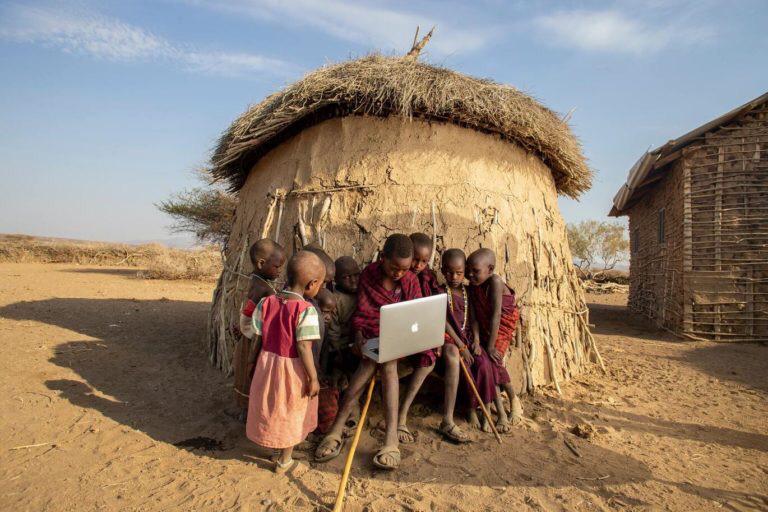Introduction
The Computer Aided Learning Management Suite (CALMS) is an innovative e-learning
platform designed to address the digital divide in Zimbabwe’s education system, particularly
in rural and underserved areas where internet access is unreliable and costly. The project
leverages Television White Spaces (TVWS) technology to provide low-cost, stable
connectivity and offline learning capabilities, ensuring continuous educational access even in
low-network areas. Unlike conventional learning management systems (LMS) that rely solely
on internet availability, CALMS integrates adaptive learning technologies, decentralized
content management, and an analytics-driven results system to create a holistic and inclusive
educational ecosystem.
Problem Statement
Zimbabwe has a low internet penetration rate of just 33%, with high data costs and poor
network infrastructure, especially in rural areas. The COVID-19 pandemic further exposed
these issues, leaving millions of students unable to continue their education remotely. Current
e-learning solutions such as Moodle, Canvas, and Google Classroom depend on stable
internet connectivity, making them inaccessible to a significant portion of Zimbabwean
learners. This has led to educational inequalities, limiting academic progress and future
opportunities for students in remote regions.
Project Objectives
The primary objective of CALMS is to bridge the digital divide by offering a scalable, cost-
effective e-learning solution that ensures quality education for all students, regardless of their
location. Specific objectives include:
Providing reliable internet access through TVWS technology, ensuring uninterrupted e-
learning in rural areas.
Creating an adaptive e-learning hub with interactive tools such as chatrooms, real-time
feedback, and assignment portals.
Developing a decentralized school website management system that enables non-technical
users to update school information and share resources.
Automating results management through analytics-driven student performance tracking,
allowing teachers to implement targeted interventions for academic improvement.
Enhancing offline learning capabilities, allowing students and teachers to download and
access materials without continuous internet connectivity.
Technology and Innovation
CALMS leverages TVWS technology to provide internet connectivity by repurposing unused
television broadcast frequencies. Unlike traditional broadband or mobile networks, TVWS
signals can penetrate obstacles such as hills, trees, and buildings, ensuring long-range, stable
internet in rural and underserved regions. Key technological components include:
TVWS Base Stations & Customer Premises Equipment (CPEs) for reliable long-range
connectivity.
Cognitive Radio Technology that dynamically selects available frequencies, preventing
interference and optimizing bandwidth.
A cloud-based learning management system that integrates automated student analytics,
adaptive learning, and interactive communication tools.
Key Features of CALMS
E-Learning Hub:
Real-time communication through chatrooms and discussion forums.
Assignment portals for submission and feedback.
Personalized learning paths based on AI-driven analytics.
Decentralized School Website Management System:
Enables schools to publish newsletters, updates, and announcements without needing
advanced programming knowledge.
Strengthens school-community engagement through virtual platforms.
Automated Results Management System:
Data-driven student performance tracking for targeted interventions.
Predictive analytics to help teachers identify struggling students and recommend support
strategies.
Offline Learning Capabilities:
Downloadable course materials for offline access.
Synchronization tools to update student progress when connectivity is available.
Impact and Expected Outcomes
By bridging infrastructure and accessibility gaps, CALMS aims to:
Provide equitable access to digital education, ensuring rural and low-income students are not
left behind.
Empower educators with tools for efficient lesson planning, tracking student progress, and
improving learning outcomes.
Strengthen community involvement by offering an accessible school website management
platform.
Support national and global educational goals, aligning with United Nations Sustainable
Development Goal 4 (Quality Education for All).
Conclusion
CALMS is a transformative solution for Zimbabwe’s education sector, enhancing learning
equity and accessibility through innovative technology. By combining adaptive learning,
TVWS-based connectivity, and offline education tools, CALMS ensures that every student,
regardless of their location, has access to quality learning opportunities. This project lays the
foundation for a digitally inclusive future, promoting sustainable educational transformation
in Zimbabwe and beyond.
internet penetration is only 33%. High data costs and poor connectivity prevent many
students from accessing online learning, a problem worsened by COVID-19. Existing e-
learning platforms depend on stable internet, making them inaccessible to most learners and
widening the education gap. To address this, CALMS (Computer Aided Learning
Management Suite) leverages Television White Spaces (TVWS) technology to provide low-
cost, reliable internet and offline access. By repurposing unused TV frequencies, CALMS
ensures uninterrupted learning without requiring expensive infrastructure. Our approach
integrates an adaptive learning hub, decentralized content management, and an analytics-
driven results system, creating an inclusive e-learning ecosystem. Educators can track student
performance, personalize learning, and enhance collaboration through real-time chatrooms,
assignment portals, and automated feedback. A built-in school website management feature
facilitates seamless communication between schools, students, and communities without
requiring advanced technical skills. CALMS also enables offline synchronization, allowing
students and teachers to download and access materials anytime. The automated results
system provides detailed analytics, helping educators identify learning gaps and implement
targeted interventions to improve student outcomes. Designed for cost-effectiveness and
scalability, CALMS optimizes bandwidth use through cognitive radio technology, ensuring
connectivity in low-network areas. By bridging infrastructure and accessibility gaps, CALMS
empowers students, educators, and communities while aligning with the UN Sustainable
Development Goal 4 (Quality Education for All). It provides a sustainable, innovative, and
inclusive solution to ensure that every student, regardless of location, has access to equitable
and high-quality education
project team members (developers, engineers, managers), educational institutions (schools,
universities), government bodies (ministries, regulatory agencies), funding agencies (donors,
investors), technology partners (software, hardware providers), community organizations, and
parents



 Invention of CALMS-Komborero Kangai.pdf
Invention of CALMS-Komborero Kangai.pdf